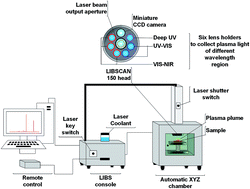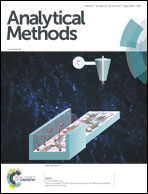Laser induced breakdown spectroscopy for quantification of sodium and potassium in minced beef: a potential technique for detecting beef kidney adulteration†
Abstract
Beef is a rich source of important minerals, with potassium (K) being the most abundant mineral quantitatively except in cured meats where sodium (Na) from the added salt predominates. This study evaluates the capability of LIBS for quantification of the Na and K contents of minced beef as a potential method of detecting beef kidney adulteration. Additionally, the study aims to demonstrate the ability of LIBS to provide spatial mineral information of minced beef. A LIBS system was employed to collect spectral information of adulterated minced beef samples. Atomic absorption spectroscopy (AAS) was used to obtain reference values for Na and K. The chemometric technique of partial least squares regression (PLSR) was used to build the prediction models. Spatial mineral maps of minced beef samples were generated based on the predicted percentages of Na and K. The models for Na and K yielded calibration coefficients of determination (Rc2) of 0.97 and 0.91 respectively. Similarly, a good calibration model was obtained for adulteration yielding a Rc2 of 0.97. Good prediction accuracy was observed for all models. Spatial mapping provided two major advantages: (a) representative measurements of samples and (b) spatial distribution of multi-elements. The results observed illustrate the ability of LIBS combined with chemometrics as a potential monitoring tool for mineral quantification as well as adulteration detection for the meat processing industry.



 Please wait while we load your content...
Please wait while we load your content...